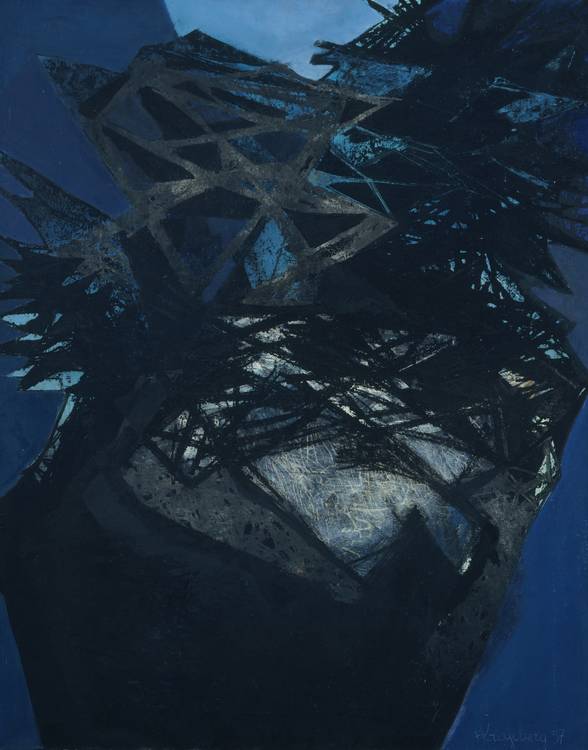马格努斯·普莱森,当代艺术I-
Magnus Plessen * - Zeitgenössische Kunst I-
(born in Hamburg 1967)
Untitled, 2009, signed, dated, titled on the overlap Plessen 2009, oil on canvas, 117 x 89 cm, on stretcher
Provenance:
Mai 36 Galerie, Zurich (gallery label)
Private collection, 德国y - acquired from the above
Literature:
Uta Grosenick and Daniel Marzona (Eds.): Magnus Plessen. Die Augen in der Hand. Malerei 1999-2009. 100 Bilder, Cologne 2009, cat.-no. 93, with full page color illustration on p. 47
From a background as a photographer and filmmaker, Magnus Plessen has turned himself into one of the most well-known painters of our time. His unique composition technique and reduced visual language as well as the broad stroke of his palette knife lets his artworks play along the boundary of the abstract and the figurative. The characteristics of Plessen’s paintings lie in their systematic development of an image, constructed by adding and removing sections of paint to reveal passages of compact form and negative space. The artist uses the idea of rotation as a means of reordering structure and dimensionality within the painting.
“It’s literally moving away from you. The relationship of the viewer to the painting and the attempt to achieve some kind of loosening is something that physically takes place in my mind but is also an action in the process of making.” (ibid.)
The artwork being auctioned here resembles this situation. Uncoordinated objects and colour fields seem to float through the canvas. As a viewer you recognize some familiar objects such as the hand or the cable and are able use them as fixed points to create your own first-hand impression of the artwork.
“I don’t want to link painting back to the reality that we know. I would like to link it to an unknown place. So, what could that place look like? It’s light, it’s colour, it’s different forces that hold the objects which are readily recognisable in my paintings together. Hold them in place, in position, give them a place. I normally tend to bring the same objects or body parts to the canvas, e.g. hands, feet or fruit. I think it’s important to bring these familiar things that I deploy onto the empty canvas. I think you need something familiar in an unfamiliar place. It just makes it so much easier to move and find your way through that space.”
(Magnus Plessen on the exhibition: Riding the Image, White Cube, Mason’s Yard, 14.9.-10.11.2012)
From a background as a photographer and filmmaker, Magnus Plessen has turned himself into one of the most well-known painters of our time. His unique composition technique and reduced visual language as well as the broad stroke of his palette knife lets his artworks play along the boundary of the abstract and the figurative. The characteristics of Plessen’s paintings lie in their systematic development of an image, constructed by adding and removing sections of paint to reveal passages of compact form and negative space. The artist uses the idea of rotation as a means of reordering structure and dimensionality within the painting.
“It’s literally moving away from you. The relationship of the viewer to the painting and the attempt to achieve some kind of loosening is something that physically takes place in my mind but is also an action in the process of making.” (ibid.)
The artwork being auctioned here resembles this situation. Uncoordinated objects and colour fields seem to float through the canvas. As a viewer you recognize some familiar objects such as the hand or the cable and are able use them as fixed points to create your own first-hand impression of the artwork.









